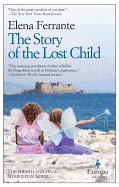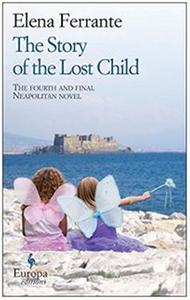
 Like the previous novels in Elena Ferrante's Neapolitan quartet, the concluding volume, The Story of the Lost Child, is ferociously, compulsively readable. Divided into two novellas and an epilogue, it has a relatively simple plot--two best friends in a tough Naples neighborhood in 1980 become pregnant at the same time and raise their daughters together--but the pace is dramatically heightened by dozens of intense little plot-hooks and startling revelations. The story is laced with earthquakes and death threats, sibling betrayals and old animosities. Ferrante is a remarkable storyteller, and knows just how much to tell every step of the way.
Like the previous novels in Elena Ferrante's Neapolitan quartet, the concluding volume, The Story of the Lost Child, is ferociously, compulsively readable. Divided into two novellas and an epilogue, it has a relatively simple plot--two best friends in a tough Naples neighborhood in 1980 become pregnant at the same time and raise their daughters together--but the pace is dramatically heightened by dozens of intense little plot-hooks and startling revelations. The story is laced with earthquakes and death threats, sibling betrayals and old animosities. Ferrante is a remarkable storyteller, and knows just how much to tell every step of the way.
Nothing in this Neapolitan neighborhood stays the same for long. Shops close. Crime is on the rise. Friends who grew up together switch spouses like dance partners. Fiery, outspoken Lila, more mercurial than anyone, is seen as the only person capable of putting the neighborhood right. The strongest bond in Ferrante's quartet remains Lila's passionate, lifelong devotion to bookish, intellectual Elena, who is infamous after the success of her novel exposing local corruption.
At the center of the series, what holds them together and breathes so much life into them, is Ferrante's fundamental understanding of the contradictions inside her characters. She is compassionate enough to bring people to life with their human flaws and shortcomings, and still make us care about them passionately as they grow older, fall in love, hurt one another and experience pain. Her characters are fierce, prone to sudden and violent changes of heart. The man who slugs Lila in the face is the same man who orders the search for Lila's missing child. One reads Ferrante with a sense of urgency in following the lives of her unpredictable, volatile, constantly evolving human beings, who remain true in essence despite their clashes and mistakes.
Throughout all four volumes, Lila grows and changes before the reader's eyes. As two characters who are perfect foils for each other, Elena and Lila face the erratic turmoil of their intertwined lives in consistently revealing ways. Not until the concluding pages of Part One, two-thirds of the way through the novel, does the title suddenly make horrifying, heartbreaking sense. Out of that shock Part Two opens a decade later, with some seismic surprises. The entire novel is as intriguing and rich and heartbreaking as real life.
Again and again, Ferrante takes the reader back to the first novella in My Brilliant Friend, in which the two girls lose their dolls. Each time she gives the account more nuance, more background information, until the initial novella in the first volume of the quartet is seen to contain the seeds of what will follow. Ultimately the plot comes full circle back to the beginning of the quartet, the framing story of Lila's disappearance, with one final moment that brings to a perfect close one of the greatest literary achievements of the new century. --Nick DiMartino, Nick's Picks, University Book Store, Seattle, Wash.
Shelf Talker: The concluding novel of the Neapolitan quartet perfectly completes the saga of two women's 66-year friendship in a rough neighborhood of Naples.

